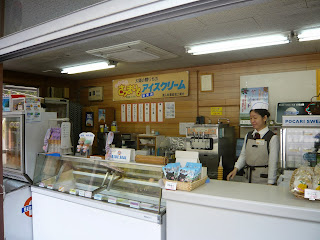Tuesday, December 31, 2013
Tuesday, December 24, 2013
Kirishimajingu Shinto Shrine
Located in the northeastern part of Kagoshima Prefecture is Kirishima.
Kirishima includes the Kirishima-Yaku National Park, which includes the
Kirishima volcano chain, Mount Sakurajima and Yakushima Island chain. The area
is famous for its scenic beauty, hot springs and magnificent mountain vistas.
Kirishimajingu Shinto Shrine - The main building of the shrine is designated as an “Important Cultural Property.” The shrine is dedicated to Ninigi no Mikoto, who has a role in Japanese creation mythology. The temple was situated in a different location but was moved 500 years ago after being destroyed by eruptions of Mount Kirishima. The shrine that exists today was built in 175 and is home to several festivals celebrating music, songs and dance. The shrine and the area surrounding it is breath-taking. Well worth a visit.
Kirishimajingu Shrine website in Japanese
Kirishimajingu Shinto Shrine - The main building of the shrine is designated as an “Important Cultural Property.” The shrine is dedicated to Ninigi no Mikoto, who has a role in Japanese creation mythology. The temple was situated in a different location but was moved 500 years ago after being destroyed by eruptions of Mount Kirishima. The shrine that exists today was built in 175 and is home to several festivals celebrating music, songs and dance. The shrine and the area surrounding it is breath-taking. Well worth a visit.
 | |
| O-mikuji |
Kirishimajingu Shrine website in Japanese
Monday, December 23, 2013
Last stop for the "Last Samurai" in Kagoshima
These are the caves where the famous "Last Samurai" Saigi Takamori is said to have died after suffering wounds during the rebellion with the Imperial Army.
Friday, December 20, 2013
Friday, December 13, 2013
Senganen - Senjingan
In 1814, a total of 3,900 people worked for
three months to complete this job. In Japan, carving letters on rocks was not
common. This action is considered to imply strong influence by Chinese culture.
Senganen - Takamasu
This is equipment used to distribute
water. After storage here, groundwater is supplied to the pond at the front of
the residence.
Senganen
These types of buildings are called
“azumaya” in Japanese, a pavilion used for resting. It was a gift presented by
the Ryukyu King in the early 17th century. The baked tiles covering
the floor have the same design as those used in a Chinese palace of the 3rd
century BC.
Subscribe to:
Comments (Atom)







































